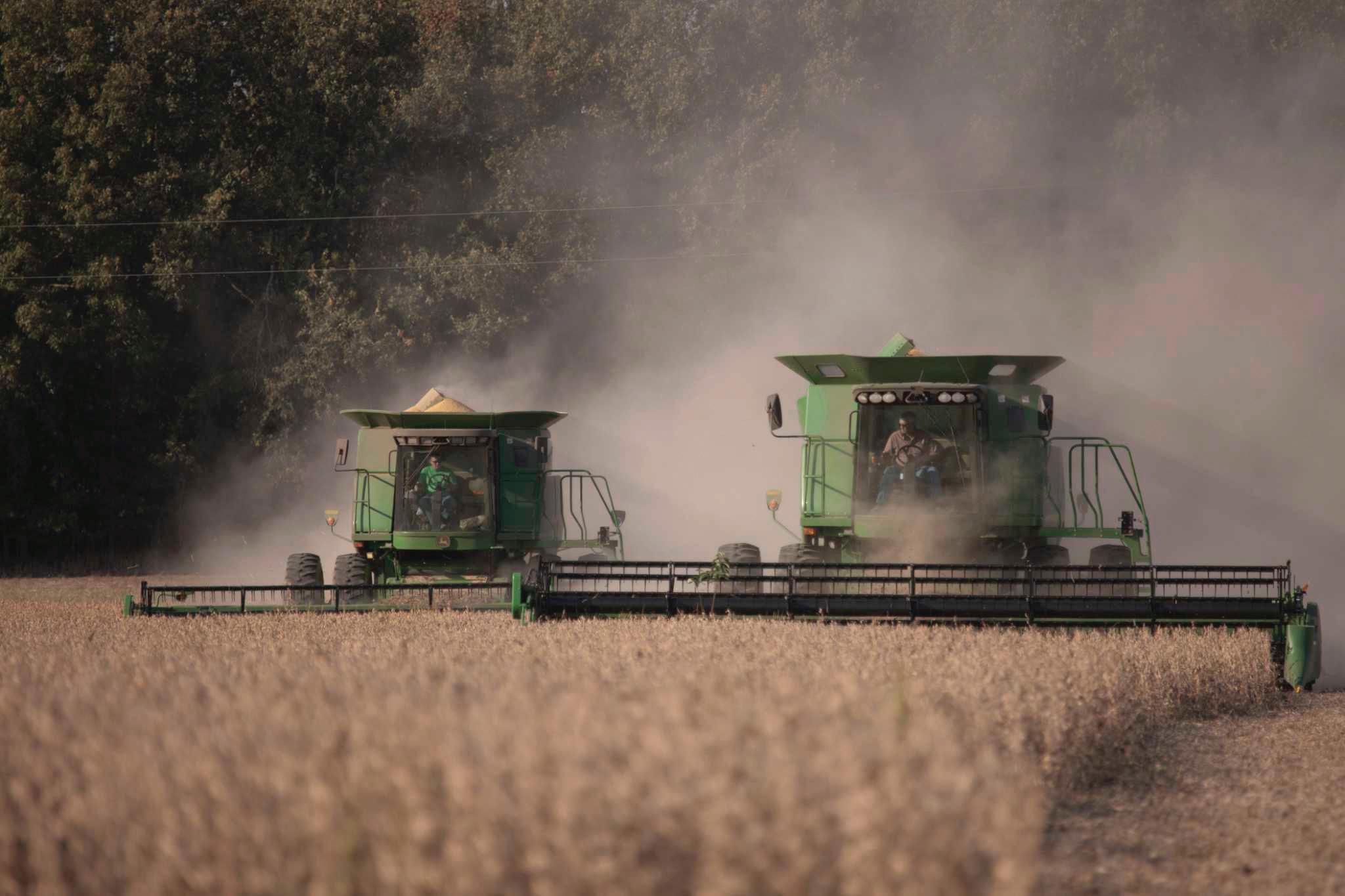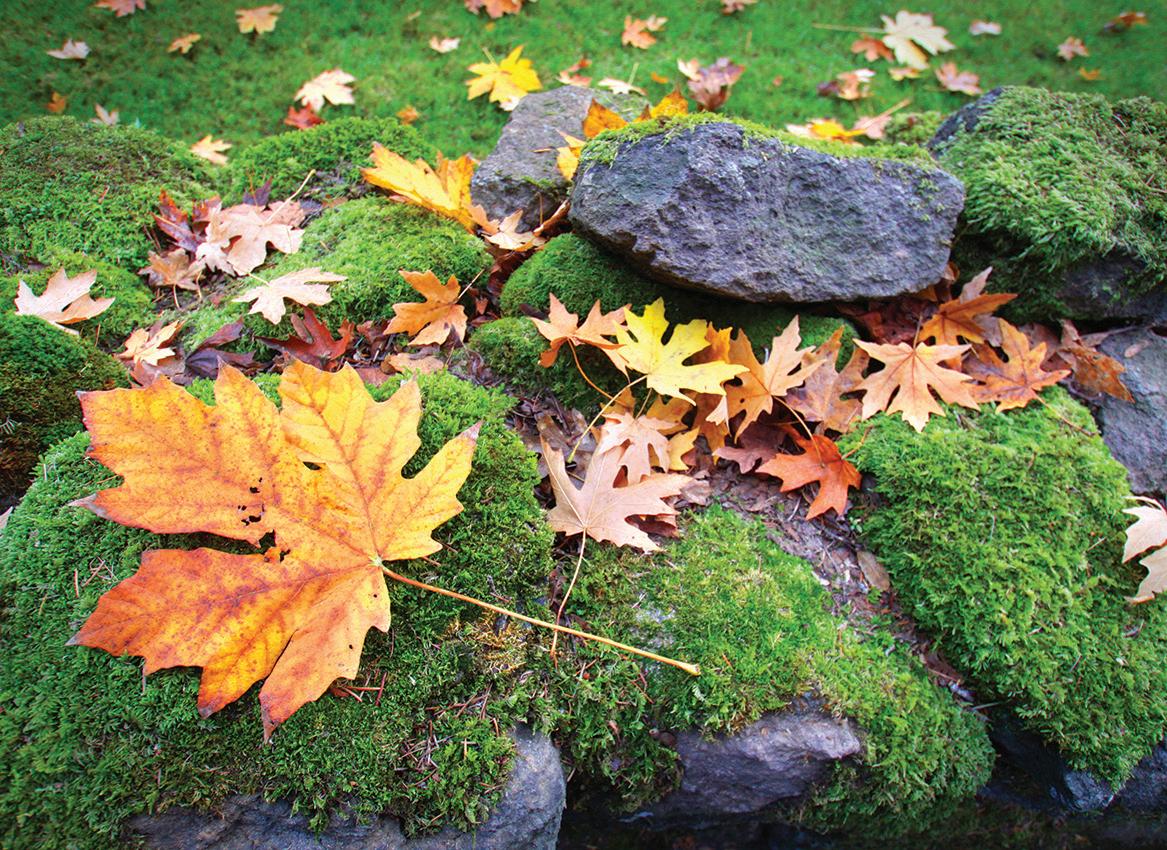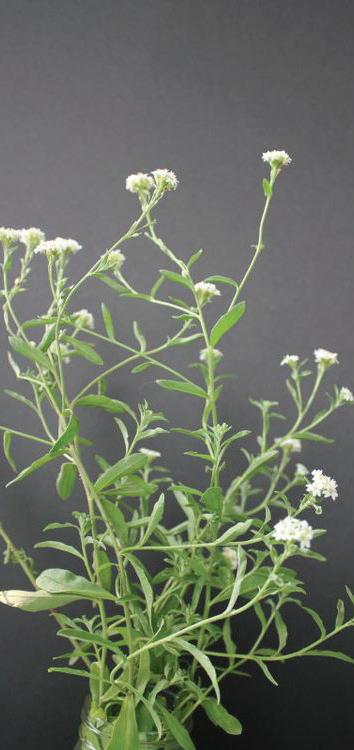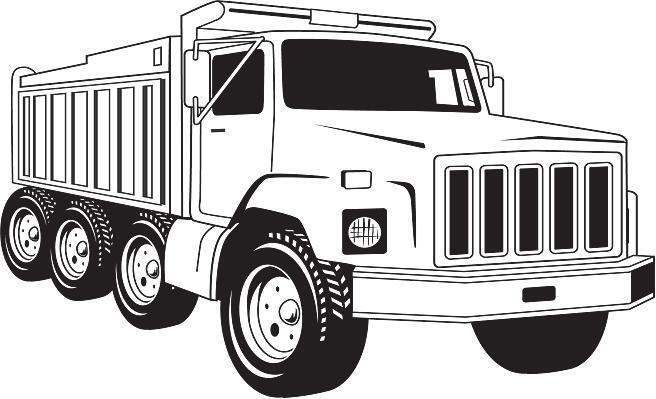



































Huron County farmers delay due to cold temperature and rain.

After about a week of warm weather at the beginning of April, the weeks leading up to May have been cold, wet, and even snowy at times. This isn’t ideal for Huron County farmers, who have had to put off planting longer than usual.
“We’re really seeing farmers kind of holding off because you really do want warm soil to plant in,” explained Teresa Sisung, industry relations specialist with the Michigan Farm Bureau. “Otherwise, it can cause damage to the seed of your crop.”
Seeds planted during cold and wet weather
can encounter plenty of issues, ranging from disease and pests to being washed away by tides of loose mud. When it comes to planting season, warmer and drier is preferable.
“Obviously we need the moisture to let those seeds germinate, but (rain) could keep us out of the field,” said Sebewaing farmer Aaron Farhner.
While the soil warmed up in the previously mentioned spell of good weather, the average temperature dropped by 10 degrees in the following weeks. According to Farhner, the soil needs to be at around 50 degrees for ideal planting conditions.
According to Sisung, half of the sugarbeets in the county have been
planted earlier this season. This is good, because sugarbeets can usually handle cold weather better than other crops. And the sooner they’re planted the more they’ll have grown by the time they’re set for harvest. Since the farmers get paid by the weight they bring in, those who got their seeds in the ground will probably be looking at a good harvest.
For those farmers that handle wheat, corn, soybeans and other cash crops, the waiting game continues as the weather takes its sweet time bringing consistently warm weather and sunny skies to Huron County. They still have some time, said Farhner, as they usually get the best yield potential when planting by May 20.

A lush, green lawn is a point of pride for many homeowners. Eye-catching landscaping anchored by a healthy lawn is one of the key ways to improve the value and curb appeal of a home. In fact, the experts at HGTV say an attractive and well-maintained landscape can add as much as 10 percent to the value of a home.
Maintaining a thriving lawn takes effort, and that means recognizing when the green in the yard may not necessarily be coming from soft blades of grass. Invasive greenery, including moss, can infiltrate a lawn and that can be problematic if
left unaddressed.
A mossy lawn is a sign that certain conditions are ripe for the moss, but not necessarily the grass, to grow. According to Lowes, moss thrives in certain conditions, which should be addressed if homeowners hope to corral it.
• Moss does well in acidic soil, more so than traditional grasses. A soil test can confirm if the pH needs to be adjusted to make it more hospitable to grass and less friendly to moss.
• Compacted soil and excess thatch can make it easier for moss to take root. These conditions also can make the soil
damp and restrict drainage, something that promotes moss growth.

• Moss can grow in shady conditions. If patches of the lawn have been overrun by moss, there could be too much shade in the area. Trimming back trees or shrubbery may help; otherwise, homeowners may need to look into hardscape or plants that thrive in such conditions to remedy shady and damp areas on portions of their landscapes.

Moss typically can be removed the same way one would dethatch a lawn. It involves rigor-
See MOSS page 7
it.
Moss may look whimsical on stones in the woods, but most homeowners would prefer their lawns be free of
 By Mike Staton Michigan State UniverSity extenSion
By Mike Staton Michigan State UniverSity extenSion
Field crop producers will learn about the most current recommendations for planting corn and soybeans by tuning in to the Michigan State University Extension Field Crops Virtual Breakfast series on Thursday, April 20 at 7:00 a.m. Manni Singh, MSU Extension cropping systems agronomist, will provide research-based recommendations for making profitable corn and soybean planting decisions while minimizing weather-related risks. Specifically, Singh will cover how management decisions and practices such as planting date, planting rate, row spacing, and plant stand uniformity affect corn and soybean yields and profitability.
The Michigan State University Extension Field Crops Virtual Breakfast series will run every Thursday from March 30 through Sept. 21, 7 – 8 a.m. EDT live via Zoom. Farmers, agribusiness personnel and others interested in ag-
riculture can interact with MSU Extension specialists and educators to get their questions answered. Michigan pesticide applicators can earn enough restricted use pesticide (RUP) credits during the season to recertify their credential. One RUP credit (1A, 1B, Comm or Private Core) and one continuing education unit (CEU) for Certified Crop Advisors (CCA) are available with each live session.
Each week features a 15-minute presentation on a timely topic from a MSU Extension specialist or educator followed by a 15-minute weather summary and forecast by MSU Extension state climatologist Jeff Andresen. Participants then receive information to apply for credits and can leave or stay for a Q&A session. In addition to the scheduled speakers, other MSU field crops specialists and educators are frequently part of the call and available to answer questions.
Participating is easy and free! You can join the live meeting via Zoom using a
computer, tablet, mobile device or regular phone line. If you are new to Zoom, simply download the Zoom app and you will be ready to join online every week to see visuals shared by presenters. A phone-in option is also available for the audio portion only.
Participants must use a one-time signup to receive an email notification with instructions for joining the Virtual Breakfast as well as weekly reminders. Registrants can opt out at any time.
If you cannot join a live session, you can view the recorded version at any time. However, only the live session will be eligible for RUP and CCA credits. Recordings will be closed-captioned and available on the Field Crops Virtual Breakfast website and the MSU Extension Field Crops Team social media platforms: Facebook, Spotify, YouTube, Apple Podcasts and Twitter.
If you are unable to sign up online, call the Lapeer County MSU Extension office at 810-667-0341.
Follow us on Facebook, Spotify, YouTube, Apple Podcasts and Twitter for breaking news.

This article was published by Michigan State University Extension. For more information, visit https://extension.msu. edu. To have a digest of information delivered straight to your email inbox, visit https://extension.msu.edu/newsletters.
To contact an expert in your area, visit https://extension.msu.edu/experts, or call 888-MSUE4MI (888-678-3464).

The population is growing and so is its demand for food to fuel those extra bodies. Harvard Business Review reports the global population has quadrupled over the last century. It’s predicted that, by 2050, the population will exceed nine billion people.
The world is not able to feed all of its inhabitants, according to Penn State. There are more than one billion people who are estimated to lack sufficient food, and two billion who do not receive adequate nutrition. Researchers from the Institute on the Environment at the University of Minnesota concluded that, to feed the world by 2030, yields on maize, rice, wheat, and soybeans will have to rise by 60 to 110 percent. At the start of 2023, projections show them only increasing by 45 to 60 percent. There are a few reasons why food supply may not meet up with demand.
• Climate change: Climate change is predicted to cause issues to crop yields, especially in portions of the world where the population is growing the fastest. For example, a recent NASA study published in the journal Nature predicts that high greenhouse gas emissions may cause corn output to decline as early as 2030, but wheat output would increase. Farmers may need to roll with the punches and shift operations to cope with the
environmental changes.


• Decreased commercial farming interest: Fewer people are working in farming. Land prices for expansion, new government mandates and regulations, and the impact of immigration and trade policies have made farming less attractive than it once was. Fewer commercial operations result in a diminished food commodity output.

• Consumer waste: Food loss and waste (FLW) is a widespread issue, posing a challenge to food security. The World Bank estimates 30 percent of all food across the globe is wasted, amounting to 1.3 billion tons of food per year. The average global household wastes 74 kg of food each year, according to the United Nations Environment Programme’s 2021 Food Waste Index. Food waste is an issue that needs a solution as the world looks for ways to feed an
expanding population in the decades to come.
In order to improve output, farmers have to make some changes. These can include investment in tools and technologies that enable farmers to apply nutrients more precisely and at lower cost, advises the Environmental Defense Fund. Seeds that need less water and fewer nutrients, as well as new fertilizers that are less likely to be lost to air and water, are some additional ideas. Farmers also may want to employ green practices, such as hydroponics and drip irrigation, if they haven’t already, to improve efficiency and cut costs. The public also may need to petition their lawmakers to make it easier for farm workers arriving on working visas to man the fields.
Food demand continues to rise, and it has become challenging for agricultural operations to keep up.

making applications (see Table 1).
What are the toughest weeds to control in Michigan hay fields?
When hay producers go to the field this summer to harvest forage crops, one of the challenges they face is how to address the weeds that creep in over time. Michigan State University Extension surveyed past participants of the Great Lakes Forage and Grazing Conference on what are the five toughest to control weeds in their hay fields. Many weeds were identified, but five rose to the top of the list: Queen Anne’s lace (wild carrot), horsenettle, hoary alyssum, curly dock and Canada thistle.
Starting with a vigorous forage stand is the best way to prevent weeds from getting established. In general, as forage stands decline, weeds find places to establish and continue to be problematic unless the management problem that caused the forage stand decline is corrected.
The first step in controlling any pest should be to have the weed properly identified. Secondly, if control methods include using pesticides, always follow label recommendations since the label is the law. Additionally, many herbicides outlined below have long residual activity or restrictions on forage and manure management. Take time to read and consider these restrictions seriously before
Each weed species may have unique control methods, however knowledge of weed biology and using it to target weeds when most vulnerable is key to longterm success.
Wild carrot (Queen Anne’s lace)
Reported the most troublesome weed in hay fields is wild carrot. This biennial is a deep-rooted plant that emerges in year one as a rosette, bolts in year two and forms flowers as early as June. Each flower can produce up to 1,000 seeds and can stay viable in the soil for up to seven years.
Mechanical control of wild carrot is an effective way to cut off flowers and stop seed production. Clipping/mowing in July has been shown to stop seed production.
Chemical control is limited. Wild carrot cannot be controlled in non-Roundup Ready (RR) alfalfa. The use of 2,4-D is effective in grassy hay fields, however, continued use leads to resistance in as few as two or three years, and resistant populations are already present in Michigan. Crossbow is the best option in grass hay fields.
Few herbicide options are available in legumes like alfalfa or legume/grass mixed fields. When infestations are too severe, renovating the field should be considered.
Horsenettle
Horsenettle comes in second place as the most troublesome weed. Horsenettle is a perennial weed that reproduces by seed and vegetatively via new shoots from creeping roots called rhizomes. Spines on plants reduce livestock palatability. Horsenettle thrives in sandy or gravelly soils but will grow on a wide range of soils. The plants flower in late spring to early summer forming yellow berries. Vegetative parts of this weed and its fruit can poison livestock. Toxicity is reduced (not eliminated) when the plants are dried and is usually higher in late summer to fall than in the spring.
Mechanical control is difficult. Tillage at any depth can spread horsenettle. Mowing early in the season encourages growth whereas mowing later decreases some growth.
Very few herbicides are effective at controlling horsenettle. Herbicides will only “suppress” horsenettle and keep it from spreading. Multiple applications over several years are necessary for control. Possible options include glyphosate (RR alfalfa), Milestone, Crossbow and GrazonNext HL. Herbicide applications at the flowering stage prior to berry formation is the optimal time for application.
Alfalfa (non-RR) and alfalfa/grass mixed fields do not have good options for chemical control.
Hoary alyssum
Hoary alyssum was the third most popular (or un-

popular in this case) weed in the survey. This is an annual to short-lived perennial weed with a long taproot that spreads by seed. Hoary alyssum is toxic when horses graze the fresh plant or eat it in dried hay. Hoary alyssum can remain toxic for up to nine months. This weed will thrive in low fertility, well-drained, coarse-textured soils. Nutrient management is important to maintain competitiveness of the desired forage over hoary alyssum. Controlling hoary alyssum is critical prior to the initial seeding of the hay field.
Conventional tillage when preparing the seedbed is an effective control method.
A burndown herbicide can be used in no-till systems.
Control in a legume/ grass mixture is limited to a dormant application of metribuzin. If found in grass hay fields, treatment by a 2,4-D or dicamba will provide good control.
Curly dock
Another tough to control weed coming in at fourth place is curly dock. This is a perennial weed with a large, thick taproot that often shows up in older stands of alfalfa, alfalfa and grass, or all grass hayfields. Reproduction is by seed. Curly dock thrives in moist soils and has seeds that can remain viable in soil for up to 80 years. This plant can be toxic when consumed in large amounts.
Mowing can help reduce populations. Tillage will control curly dock or by us-
ing a shovel to remove the crown 2 inches below the soil surface.
Chemical control in grass hayfields is effective with Cimarron Plus, 2,4-D, dicamba, GrazonNext HL and Crossbow.
Established alfalfa and legume/grass mixtures have few options for chemical control. Raptor or Pursuit can be effective when applied on curly dock seedlings in pure alfalfa.
Canada thistle
Canada thistle rounds out the end of the top five toughest to control weeds in forages. This perennial spreads by seed and rhizomes. Emergence occurs in the spring and plants flower when days are the longest. Seeds have an attached pappus ‘feather-like structure’ that allows for long distance transport in the wind. Canada thistle’s creeping roots allows for the formation of large colonies that spread over the field.
Mechanical control of Canada thistle with infrequent mowing is not highly effective. Repeated mowing will stress the plant and force it to deplete root nutrients. Tillage can increase the problem by cutting roots thereby making new plants.
Canada thistle is most susceptible to herbicides between the bud and early flower stages or in the early fall prior to frost.
Most herbicides will only “suppress” Canada thistle and keep it from spreading. Yearly herbicide applications will be needed to get
Canada thistle infestations under control. Possible herbicide options include Cimarron Plus, Crossbow, Milestone, GrazonNext HL and Stinger in grass hay fields.
Non-RR alfalfa and legume/grass mixtures have very few effective Canada thistle control options. Mixed legume/grass stands present special challenges
Legume-grass mixtures have potential to provide agronomic and livestock feeding benefits such as plant diversity, increased persistence and livestock nutrition. However, there are no easy herbicide options for controlling weeds in mixed grass/legume stands. When considering planting legume grass mixtures, select fields with low weed pressure.
ously raking or agitating the lawn to loosen the moss. This can be done by hand with a rake, or in the case of a lot of moss or a large lawn, with a dethatching blade attachment for a lawn mower.

Aerating the soil will help keep moss that was removed from returning. In addition, amending the soil so that it has a more dense nutritional profile by adding compost, as well as improving drainage and adjusting the pH, are keys to keeping moss from returning.
For pesky moss, The Spruce suggests making
a solution of one box of baking soda to two gallons of water and spraying this solution on the patches of moss. It is a natural alternative to using chemical products. Certain sources indicate a glyphosate herbicide could work on moss, but the World Health Organization considers glyphosate to be a probable human carcinogen and it is prohibited in certain areas.
Moss may be green, but it’s often not the type of green homeowners desire in their lawns. Learning about moss can help when removing it and preventing it in the future.
Consumers familiar with the disparity in price between organic fruits and vegetables and conventional alternatives may be curious if that difference in price pays off with healthier foods. According to a 2014 study published in the British Journal of Nutrition, it does. Researchers behind the study concluded that the antioxidant compounds in organic fruits and vegetables deliver between 20 and 40 percent higher antioxidant activity. That’s a significant benefit, as the Harvard T.H. Chan School of


Public Health notes that antioxidant-rich fruits, vegetables and legumes are associated with a lower risk of various diseases, including cardiovascular diseases and cancer, and deaths from all causes. In addition, the Mayo Clinic notes that organically grown produce has traditionally had lower levels of pesticide residue than conventionally grown alternatives, though safety measures governing conventional produce and residue levels have changed in recent years and reduced that gap.


Researchers concluded that the antioxidant compounds in organic fruits and vegetables deliver between 20 and 40 percent higher antioxidant activity.


